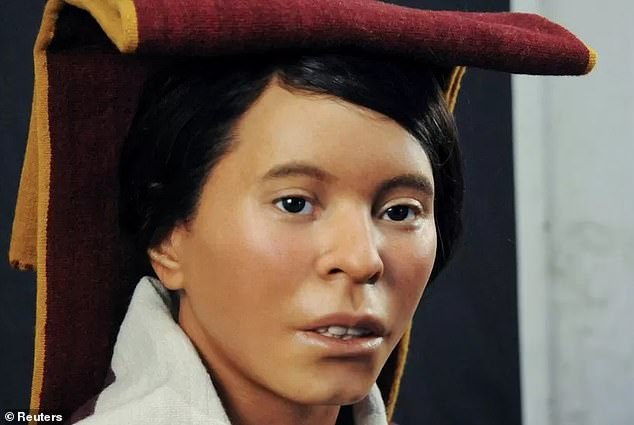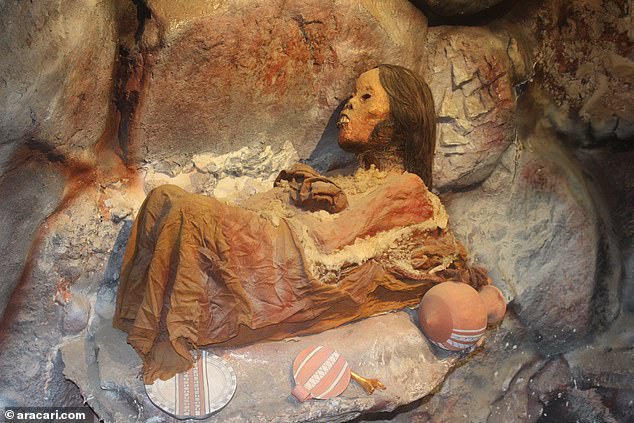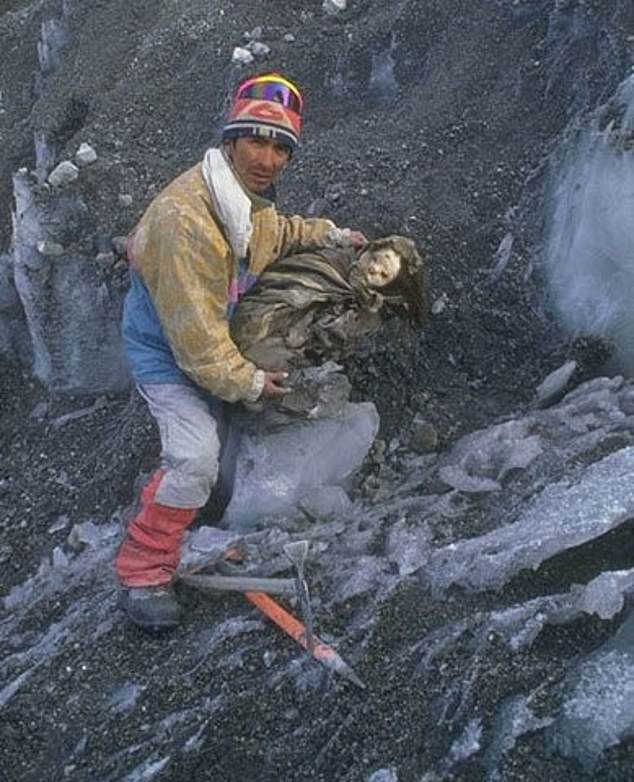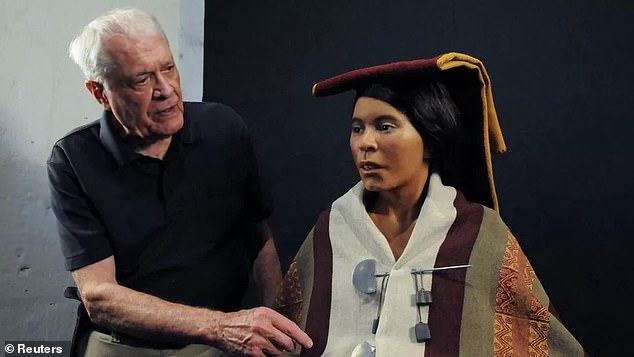Face of Peru’s most famous mummy REVEALED: Archaeologists reconstruct look of the ‘Inca Ice maiden’ who was sacrificed in a ritual more than 500 years ago
>
The face of Peru’s most famous mummy, a teenage girl sacrificed in a ritual, has been seen again for the first time in more than 500 years.
Archaeologists unveiled the facial reconstruction of the girl known as “Juanita” or the “Inca Ice Maiden” on Tuesday, which was created using body scans, skull measurements and DNA studies – all of which took 400 hours.
Juanita was killed by blunt force trauma between 1440 and 1480 at Argentina’s Lullailaco volcano, 22,100 feet above sea level, and her body was left frozen in time until it was discovered in 1995.
Her preserved, lifeless body was the first evidence that the Incas also sacrificed women in ceremonial processes.

Archaeologists unveiled a facial reconstruction of the girl known as “Juanita” or the “Inca Ice Maiden” on Tuesday, which was created using body scans, skull measurements and DNA studies — all of which took 400 hours to complete.
“I thought I would never know what her face looked like when she was alive,” said Johann Reinhard, the American anthropologist who found the mummy.
Reinhard found Juanita wrapped in burial linens that were brightly colored but had since turned black due to the weather.
The facial reconstruction was carried out by a team of Polish and Peruvian scientists who worked with Swedish sculptor Oscar Nilsson.
The reconstruction now on display at the Catholic University of Santa Maria in Arequipa shows her mouth slightly open and piercing eyes staring into the distance.
The silicone statue includes colorful clothing, headdress and decorations, based on scans of the mummy.
The Incas ruled a wide swath of western South America along the Pacific coast and the Andean highlands, and saw their rich and powerful empire fall to Spanish conquistadors in 1532.
But some time before that, the girl — around 14 or 15 years old — had been sacrificed with a blow to the head, perhaps in a ritual ritual seeking divine relief from natural disasters, according to scholars.

Juanita was killed by blunt force trauma between 1440 and 1480 at Argentina’s Lullailaco volcano, 22,100 feet above sea level, and her body was left frozen in time until it was discovered in 1995.

“I thought I would never know what her face looked like when she was alive,” said Johan Reinhard, the American anthropologist who found the mummy in 1995.
She was found with her hands resting on her lap and her head falling forward.
According to anthropological studies, Juanita was about five feet four inches tall and weighed only 77 pounds.
Experts believe she only consumed alcohol and drugs in the days before her last breath.
It is believed that the Incas chose children for their beauty and sacrificed them in a ceremony called capacocha.
Children were not offered to feed or appease the gods, but rather “to enter the world of the gods and live with them in heaven.”

The facial reconstruction was carried out by a team of Polish and Peruvian scientists who worked with Swedish sculptor Oscar Nilsson.
It was considered a great honor, a transition to a better life in which they were expected to keep in touch with the community through the shaman.
Reinhard discovered the remains of two other children along with Juanita.
The three children’s journey to the place of their deaths had begun about 500 miles north of where they were found, in Cusco, in what is now Peru.
They will then set out on foot in a long procession with other children, priests and officials, arriving at the foot of Llullaillaco a few weeks later.
Given alcohol made from fermented corn to drink and coca leaves to chew to ward off fatigue and pain, they must have walked steadily upward into the thin air.
They had an extremely difficult time: above 16,000 feet, the body struggles to adapt to the altitude, and in addition to oxygen deprivation, their tiny bodies had to deal with painfully low temperatures.
Once at the top, cold and exhausted and dressed in their best clothes — in the case of the older girl, a gray shawl decorated with bone and metal decorations — the children were allowed to die from exposure.
“The priests lit fires or burned offerings while they waited for the children to slowly lose consciousness, ready to place them in their tombs,” Constanza Cerutti, an Argentine anthropologist, told New Scientist.
The three children were stored in a freezer in the museum. The eldest girl is now displayed in a specially designed case that keeps her remains at -4 F, surrounded by a specific gas to prevent deterioration and in a pressurized atmosphere to protect against ice cremation.
(Tags for translation) Daily Mail
